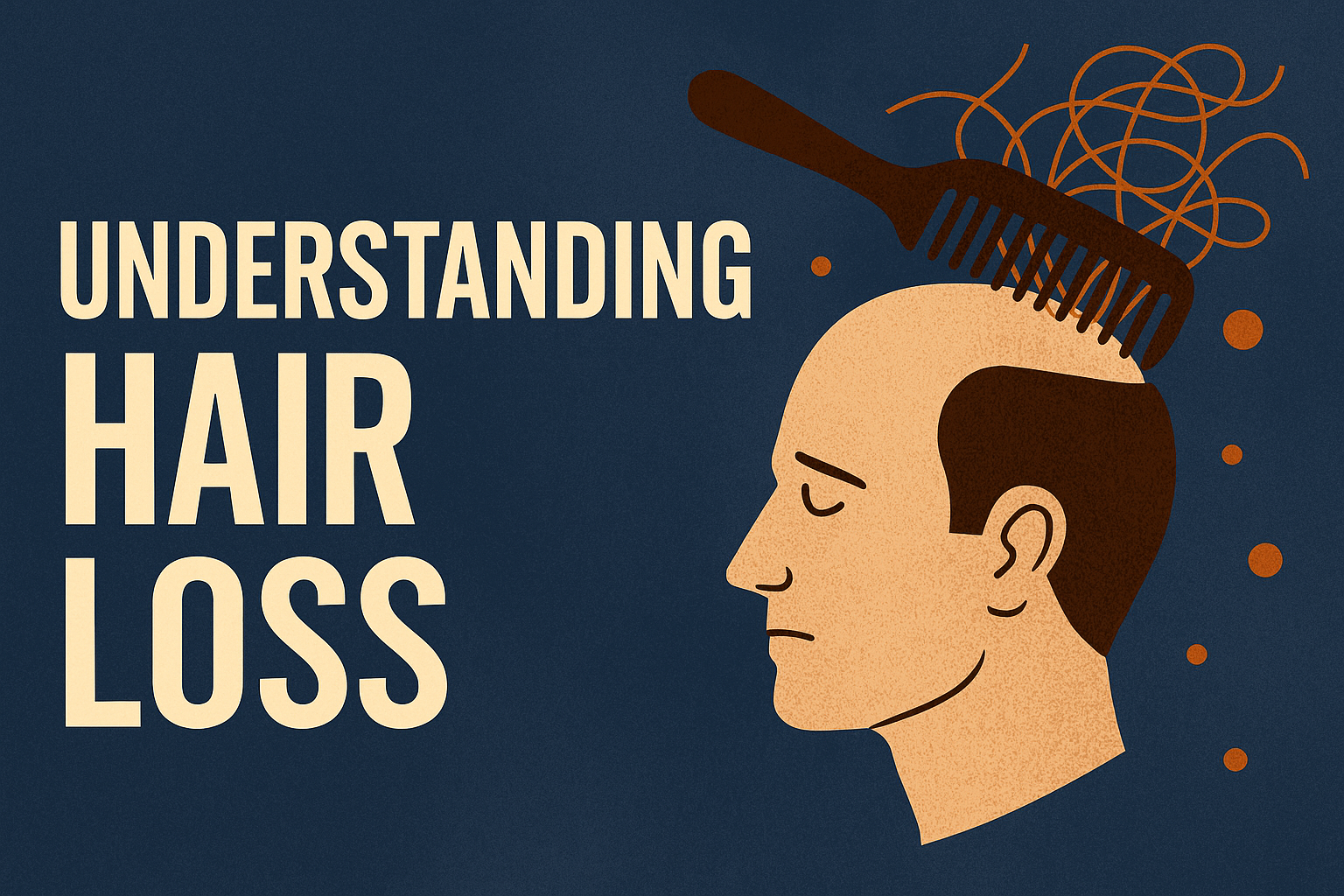Hair loss affects millions of people around the world and can occur at any age. While some hair loss is normal, excessive shedding or bald patches may be a sign of an underlying condition. In 2025, modern treatments and early intervention can offer excellent results in both prevention and regrowth.
What Is Hair Loss?
Hair loss, or alopecia, refers to a decrease in the amount or density of hair on the scalp or body. It can be temporary or permanent, and may affect just the scalp or the entire body. Hair loss can be gradual or sudden, and it impacts men and women differently.
Common Causes of Hair Loss
- Genetics (Androgenetic Alopecia): The most common cause in both men and women. Often referred to as male or female pattern baldness.
- Hormonal Changes: Pregnancy, menopause, thyroid disorders, and hormonal imbalances can lead to hair thinning.
- Stress and Trauma: Emotional or physical stress (surgery, illness, childbirth) can trigger temporary shedding.
- Poor Nutrition: Deficiencies in iron, vitamin D, protein, or zinc can contribute to hair loss.
- Medical Conditions: Conditions like alopecia areata, lupus, and scalp infections.
- Medications: Certain drugs used for cancer, depression, blood pressure, and more.
- Hairstyling Practices: Tight hairstyles, excessive heat, and harsh chemicals can damage hair and cause breakage or traction alopecia.
Types of Hair Loss
- Androgenetic Alopecia: Genetic and progressive, typically a receding hairline or thinning crown.
- Telogen Effluvium: Sudden shedding due to stress or illness; usually temporary.
- Alopecia Areata: Autoimmune disorder causing patchy hair loss.
- Traction Alopecia: Hair loss from tight hairstyles like ponytails or braids.
Diagnosis and Evaluation
If you’re experiencing hair loss, a dermatologist may perform:
- Scalp examination
- Blood tests (to rule out deficiencies or thyroid issues)
- Pull test
- Biopsy (in rare cases)
Treatment Options in 2025
- Topical Minoxidil (Rogaine): Available over the counter; helps stimulate hair growth.
- Finasteride (for men): Prescription medication that blocks DHT, a hormone linked to hair loss.
- Low-Level Laser Therapy (LLLT): Devices that promote regrowth by stimulating follicles.
- Platelet-Rich Plasma (PRP): Uses your blood’s growth factors to regenerate hair.
- Hair Transplant Surgery: A permanent solution involving follicle grafting.
- Hormone Therapy: For women with hormonal imbalances.
- Natural Remedies: Biotin, caffeine shampoos, scalp massage, essential oils (e.g., rosemary, peppermint).
Preventive Tips
- Eat a balanced, protein-rich diet
- Avoid tight hairstyles and harsh treatments
- Manage stress with mindfulness and exercise
- Use gentle, sulfate-free shampoos
- Protect your scalp from excessive sun exposure
- Stay hydrated
When to See a Doctor
If you notice:
- Rapid or patchy hair loss
- Excessive daily shedding
- Itching, burning, or scalp pain
- Thinning that affects self-esteem
It’s time to consult a medical professional to identify the root cause and receive personalized care.
Final Thoughts
Hair loss can be distressing, but you’re not alone—and there are more solutions than ever in 2025. Whether your goal is prevention, slowing loss, or regrowth, today’s treatments are safer and more effective than ever. Early action is key.
You May Also Like:
- “Is PRP Hair Treatment Worth It in 2025?”
- “Top Nutrients for Hair Growth Backed by Science”
- “Hair Transplants: Costs, Risks, and Results”
